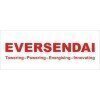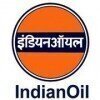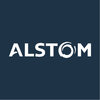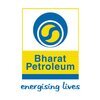Filter interviews by
PETROJET HSE Officer Interview Questions and Answers
PETROJET HSE Officer Interview Experiences
1 interview found
I applied via Approached by Company and was interviewed before Oct 2023. There was 1 interview round.
(3 Questions)
- Q1. Briefly explain abouy Excavations.
- Ans.
Excavations refer to the process of digging or removing earth to create a hole or trench for construction or archaeological purposes.
Excavations are commonly done to create foundations for buildings, roads, or other structures.
Proper safety measures must be followed during excavations to prevent accidents such as cave-ins.
Excavations can also be used in archaeological digs to uncover artifacts and historical remains.
Su...
- Q2. Define and explain about confined space
- Ans.
Confined space is an area that is not designed for continuous occupancy, has limited entry and exit points, and may have hazardous conditions.
Confined spaces are typically small and enclosed, making it difficult to enter and exit.
These spaces may have limited ventilation, which can lead to a buildup of hazardous gases or lack of oxygen.
Examples of confined spaces include storage tanks, silos, tunnels, and sewers.
Before...
- Q3. What is RISK ASSESSMENT
- Ans.
Risk assessment is the process of identifying, evaluating, and prioritizing potential risks in order to minimize their impact on safety and health.
Identifying potential hazards and risks in the workplace
Evaluating the likelihood and severity of these risks
Prioritizing risks based on their level of impact
Implementing control measures to mitigate or eliminate risks
Regularly reviewing and updating risk assessments
Example:...
Interview Preparation Tips
Top trending discussions






Interview questions from similar companies

I applied via Walk-in and was interviewed in Sep 2022. There were 2 interview rounds.

(4 Questions)
- Q1. HIRA Audit report Inspection Report Monthly report
- Q2. Work permit system Confined space Hazards and precautions measure Hot work Hazards and precautions Height work hazards and precautions Electrical hazards and precautions Chemical safety Fire and safety PPE...
- Q3. Mock drill Medical Emergency
- Q4. TBT Safety training Class room training Induction training
Interview Preparation Tips
This is follow higher quality of safety standards.

HSE Officer Interview Questions & Answers
Megha Engineering & Infrastructuresposted on 17 Jun 2022
I applied via Job Fair and was interviewed in Dec 2021. There were 6 interview rounds.

(1 Question)
- Q1. About applicants competency certificate (mandatory) for this position and eligibility for interview (for eg. Safety certification from SBTET , RLI , CLI , ADIS , PDIS , Fire and safety , NEBOSH , IOSH , NI...
(21 Questions)
- Q1. What is HIRA , uses & importance ?
- Ans.
HIRA stands for Hazard Identification and Risk Assessment. It is a systematic process used to identify potential hazards and assess the associated risks in order to implement appropriate control measures.
HIRA is used to identify and evaluate potential hazards in the workplace.
It helps in assessing the risks associated with these hazards.
The process involves identifying the likelihood and severity of potential incidents...
- Q2. What is Job Safety Analysis ?
- Ans.
Job Safety Analysis (JSA) is a systematic process to identify and mitigate potential hazards in a job or task.
JSA involves breaking down a job into individual steps and analyzing the hazards associated with each step.
It helps in identifying potential risks and implementing preventive measures to ensure the safety of workers.
JSA promotes communication and collaboration between workers, supervisors, and safety profession...
- Q3. Explain Hierarchy of Risk Control ?
- Ans.
The hierarchy of risk control is a systematic approach to managing and reducing risks in the workplace.
Elimination: Completely remove the hazard or risk from the workplace.
Substitution: Replace the hazard or risk with a less hazardous alternative.
Engineering controls: Modify the workplace or equipment to minimize the risk.
Administrative controls: Implement policies, procedures, and training to reduce the risk.
Personal ...
- Q4. What is Risk Matrix ?
- Ans.
A risk matrix is a visual tool used to assess and prioritize risks based on their likelihood and impact.
A risk matrix typically consists of a grid with likelihood and impact levels.
The likelihood levels may range from low to high, while the impact levels may range from minor to catastrophic.
Each risk is assessed and assigned a likelihood and impact level, which determines its position on the matrix.
The risk matrix help...
- Q5. What are Key performance Indicators: explain ?
- Ans.
Key performance indicators (KPIs) are measurable values that demonstrate how effectively an organization is achieving its objectives.
KPIs are used to evaluate the success of an organization or specific activities within it.
They provide a clear and measurable way to track progress towards goals.
KPIs should be specific, measurable, achievable, relevant, and time-bound (SMART).
Examples of KPIs for an HSE Officer may inclu...
- Q6. Colour Coding uses and significance?
- Ans.
Colour coding is a system of assigning colours to objects or areas to indicate their purpose or status.
Colour coding helps to identify and differentiate between objects or areas quickly and easily.
It is commonly used in industries such as healthcare, food processing, and construction.
For example, red may be used to indicate a fire hazard, yellow for caution, and green for safety.
In healthcare, colour coding is used to ...
- Q7. Distinguish between Safe Work Load & Capacity ?
- Ans.
Safe work load is the maximum weight a structure or equipment can handle without causing damage or failure, while capacity refers to the maximum amount of work that can be done within a given time frame.
Safe work load is a measure of weight capacity, while capacity is a measure of work output.
Safe work load is determined by the strength and durability of the structure or equipment, while capacity is determined by the e...
- Q8. Importance of Mock Drill at work place ?
- Ans.
Mock drills are important to prepare employees for emergency situations and ensure effective response.
Mock drills help identify gaps in emergency response plans
They provide an opportunity to train employees on emergency procedures
Mock drills increase awareness and preparedness among employees
They help evaluate the effectiveness of emergency response equipment
Examples include fire drills, earthquake drills, and active s
- Q9. Differences between emergency assembly point , Emergency Response Plan , Emergency Evacuation Plan ?
- Ans.
Emergency assembly point, Emergency Response Plan, and Emergency Evacuation Plan are all part of emergency preparedness but serve different purposes.
Emergency assembly point is a designated location where people gather during an emergency.
Emergency Response Plan outlines the steps to be taken in response to an emergency.
Emergency Evacuation Plan is a detailed plan for evacuating a building or area in case of an emergen...
- Q10. Classification of Permit to work systems : Duration : Competency and parameters obliged ?
- Ans.
Permit to work systems are classified based on duration, competency, and parameters obliged.
Permits can be classified as short-term or long-term depending on the duration of the work.
Competency-based permits ensure that only qualified personnel are allowed to perform specific tasks.
Permits can also be classified based on the parameters that must be met before work can begin, such as safety checks or equipment inspectio...
- Q11. Audit : Documents verified and Inspected ?
- Ans.
During audits, I verify and inspect various documents related to HSE policies and procedures.
I verify documents such as risk assessments, incident reports, and emergency response plans.
I inspect documents to ensure they are up-to-date and comply with relevant regulations and standards.
I also check that employees are trained on relevant HSE policies and procedures.
Examples of documents I review include permits to work, ...
- Q12. Confined Space : Hazards and Precautions?
- Ans.
Confined spaces pose various hazards such as lack of oxygen, toxic gases, and physical entrapment. Precautions include proper ventilation, monitoring, and personal protective equipment.
Identify and assess the confined space before entry
Ensure proper ventilation and air quality testing
Use personal protective equipment such as respirators and harnesses
Have a rescue plan in place and train personnel on emergency procedure...
- Q13. Excavations: Hazards and Precautions?
- Q14. What is ELCB and RCCB ?
- Ans.
ELCB stands for Earth Leakage Circuit Breaker and RCCB stands for Residual Current Circuit Breaker.
ELCB is a safety device used to detect and protect against electrical leakage or faults to the earth.
RCCB is a type of ELCB that provides additional protection against residual current or ground faults.
ELCB and RCCB are commonly used in electrical installations to prevent electric shock and fire hazards.
ELCB and RCCB work...
- Q15. Web slings : Capacity and Colour Coding ?
- Q16. Ladder ratios and some technical questions ?
- Q17. Blasting : Hazards & Precautions ?
- Ans.
Blasting poses various hazards such as noise, vibration, flying debris, and toxic gases. Precautions include proper training, use of personal protective equipment, and monitoring of air quality.
Hazards include noise, vibration, flying debris, and toxic gases
Proper training is necessary for all personnel involved in blasting operations
Personal protective equipment such as earplugs, safety glasses, and respirators should...
- Q18. Difference Attitude and aptitude ?
- Ans.
Attitude refers to a person's mindset or outlook, while aptitude refers to a person's natural ability or skill in a specific area.
Attitude is a person's attitude or approach towards something, while aptitude is their inherent ability or talent.
Attitude is influenced by beliefs, values, and experiences, while aptitude is more innate and can be developed through practice.
Attitude is subjective and can change over time, w...
- Q19. What is meant by Density ?
- Ans.
Density refers to the amount of mass per unit volume of a substance.
Density is a physical property of matter.
It is calculated by dividing the mass of a substance by its volume.
The unit of density is typically grams per cubic centimeter (g/cm³) or kilograms per cubic meter (kg/m³).
Density can be used to identify substances and to determine their purity.
For example, gold has a higher density than lead, so a piece of gold...
- Q20. State two important qualities of HSE officer on site ? (Reason based)
- Ans.
The two important qualities of an HSE officer on site are attention to detail and strong communication skills.
Attention to detail is crucial for an HSE officer as they need to identify potential hazards and ensure compliance with safety regulations.
Strong communication skills are essential for an HSE officer to effectively communicate safety procedures and policies to workers and management.
Attention to detail can be d...
- Q21. What is Critical Lifting (Erection activity) , Tandem Lifting please state its Hazards and Precautions ?
- Ans.
Critical lifting and tandem lifting are hazardous erection activities that require precautions to ensure safety.
Critical lifting involves lifting heavy loads that require special equipment and expertise.
Tandem lifting involves using two or more cranes to lift a load.
Hazards include equipment failure, dropped loads, and worker injuries.
Precautions include proper planning, equipment inspection, and training for workers i...
(1 Question)
- Q1. What is your current Salary and your salary expectations for current job ?
(1 Question)
- Q1. Whether a candidate is possesing a valid Driving License ?
- Ans.
Yes, the candidate possesses a valid Driving License.
The candidate has a valid Driving License.
Possessing a valid Driving License is a requirement for the HSE Officer role.
Having a valid Driving License demonstrates the candidate's ability to operate vehicles safely.
The candidate may be required to drive as part of their job responsibilities, such as conducting site inspections or responding to emergencies.
(1 Question)
- Q1. You will receive an email from Agencies HR Desk about your Interview status ? ( if selected they will ask you to send your Educational / Experience certificates by email if not , your application will b...
Interview Preparation Tips
- HSE manuals
- Youtube
- Ambitionbox
- Testimonials of Safety professio
- pdfdrive
- Safety Engineering
- NHS
- Osha
- Nebosh
- IOSH
- NIOSH
- Podcasts
- cdc.gov
NEVER GIVE UP.
Thanks for reading my content .

I applied via Referral and was interviewed before Nov 2023. There was 1 interview round.
(2 Questions)
- Q1. HSE policy of saipem
- Ans.
Saipem's HSE policy focuses on ensuring the health, safety, and environmental protection of its employees and stakeholders.
Saipem prioritizes the health and safety of its employees by implementing strict safety protocols and providing regular training.
The company is committed to minimizing its environmental impact through sustainable practices and compliance with regulations.
Saipem's HSE policy is regularly reviewed an...
- Q2. Control of workplace hazards.
- Ans.
Control of workplace hazards involves identifying, assessing, and implementing measures to eliminate or minimize risks to ensure a safe work environment.
Identify potential hazards in the workplace through regular inspections and risk assessments.
Assess the level of risk associated with each hazard to prioritize control measures.
Implement control measures such as engineering controls, administrative controls, and person...


(3 Questions)
- Q1. What are the challenges in shutdown.?
- Ans.
Shutdown challenges include safety risks, time constraints, and equipment maintenance.
Ensuring safety of workers during shutdown activities
Completing shutdown within the allotted time frame
Performing necessary maintenance and repairs on equipment
Managing logistics and resources for shutdown
Coordinating with various departments and stakeholders
Dealing with unexpected issues or emergencies
Ensuring compliance with regulat
- Q2. Risk assessment step.
- Ans.
Risk assessment is a systematic process of identifying, analyzing and evaluating potential hazards and risks associated with a particular activity or process.
Identify hazards and potential risks
Analyze the likelihood and severity of the risks
Evaluate the risks and determine appropriate control measures
Review and update the risk assessment regularly
Examples: Job Hazard Analysis, HAZOP, FMEA
- Q3. Drop Object prevention.
Interview Preparation Tips

I applied via Naukri.com and was interviewed before Jan 2021. There were 3 interview rounds.
Interview Questionnaire
1 Question
- Q1. Past experience and job specification
Interview Preparation Tips

Interview Questionnaire
3 Questions
- Q1. Do i have experience in taking initiatives with respect to HSE
- Ans.
Yes, I have experience in taking initiatives with respect to HSE.
Implemented a new safety training program for employees
Developed and implemented a hazard identification and risk assessment process
Led a team in conducting regular safety inspections and audits
Initiated and organized safety awareness campaigns and workshops
Created and maintained HSE policies and procedures
- Q2. Am I aware of Business ethics and bribery laws?
- Ans.
Yes, I am aware of business ethics and bribery laws.
I understand that business ethics are the moral principles that guide the behavior of individuals and organizations in the business world.
I am familiar with the laws and regulations related to bribery, including the Foreign Corrupt Practices Act (FCPA) and the UK Bribery Act.
I know that bribery is illegal and can result in severe consequences for both individuals and ...
- Q3. Am I aware of shut down activities.?
- Ans.
Yes, I am aware of shut down activities.
I have experience in planning and executing shut down activities.
I am familiar with the procedures and protocols involved in shut down activities.
I have worked on shut down activities in various industries such as oil and gas, manufacturing, and construction.
I understand the importance of safety during shut down activities and have implemented safety measures in the past.
I am awa...
Interview Preparation Tips

I applied via Company Website and was interviewed in Jun 2022. There were 2 interview rounds.

Toolbox talk, safety training, mock drill, House keeping in area, worker
motivation, safety Induction, monthly mitting, and monthly HSE report. Safety walk.permit system. HIRA and JSA.
Interview Preparation Tips

Senior Safety Officer Interview Questions & Answers
Megha Engineering & Infrastructuresposted on 24 Oct 2023
I applied via Recruitment Consulltant and was interviewed in Sep 2023. There were 2 interview rounds.

(2 Questions)
- Q1. Safety related, HSE policy, emergency plan.
- Q2. Confined space, hot work, height work, rigging & lifting, electrical safety, LOTO etc.

I applied via Approached by Company and was interviewed before Aug 2021. There were 2 interview rounds.

(1 Question)
- Q1. Relocation and Salary Discussion
Interview Preparation Tips
PETROJET Interview FAQs
Tell us how to improve this page.
Interview Questions for Popular Designations
Interview Questions from Similar Companies
PETROJET HSE Officer Reviews and Ratings
based on 3 reviews
Rating in categories
|
Safety Officer
12
salaries
| ₹8 L/yr - ₹14 L/yr |
|
Mechanical Engineer
7
salaries
| ₹2.3 L/yr - ₹11.7 L/yr |
|
HSE Officer
7
salaries
| ₹10.4 L/yr - ₹15 L/yr |
|
Work Permit Receiver
6
salaries
| ₹2 L/yr - ₹11.2 L/yr |
|
QC Piping Inspector
5
salaries
| ₹12.5 L/yr - ₹15 L/yr |

L&T Energy Hydrocarbon

TechnipFMC

Nayara Energy

Reliance Industries
Calculate your in-hand salary
- Home >
- Interviews >
- PETROJET Interview Questions >
- PETROJET HSE Officer Interview Questions







